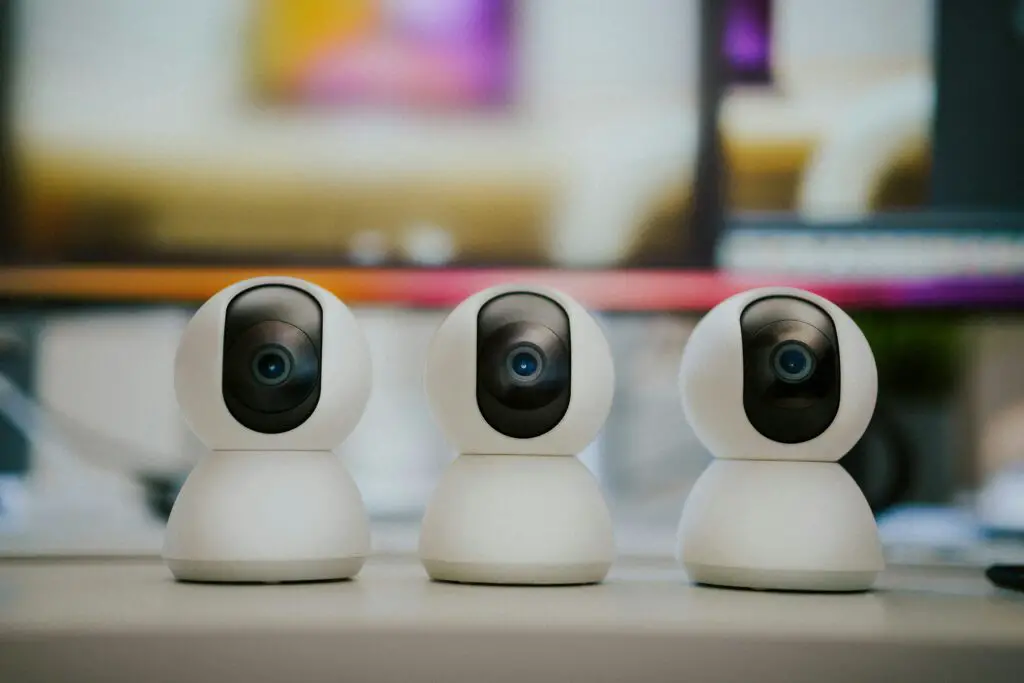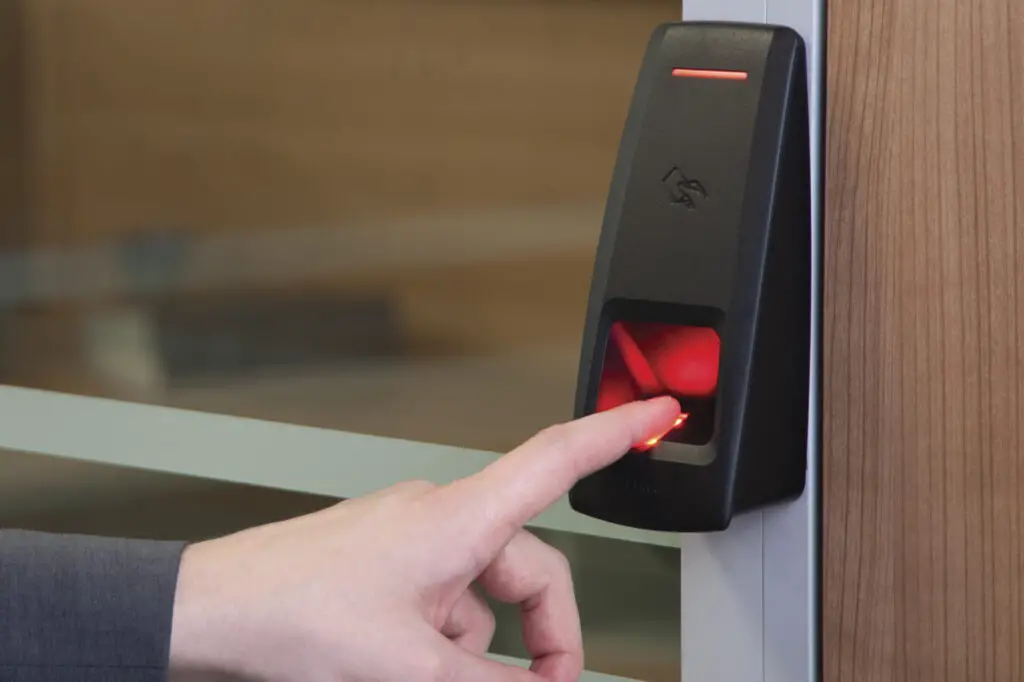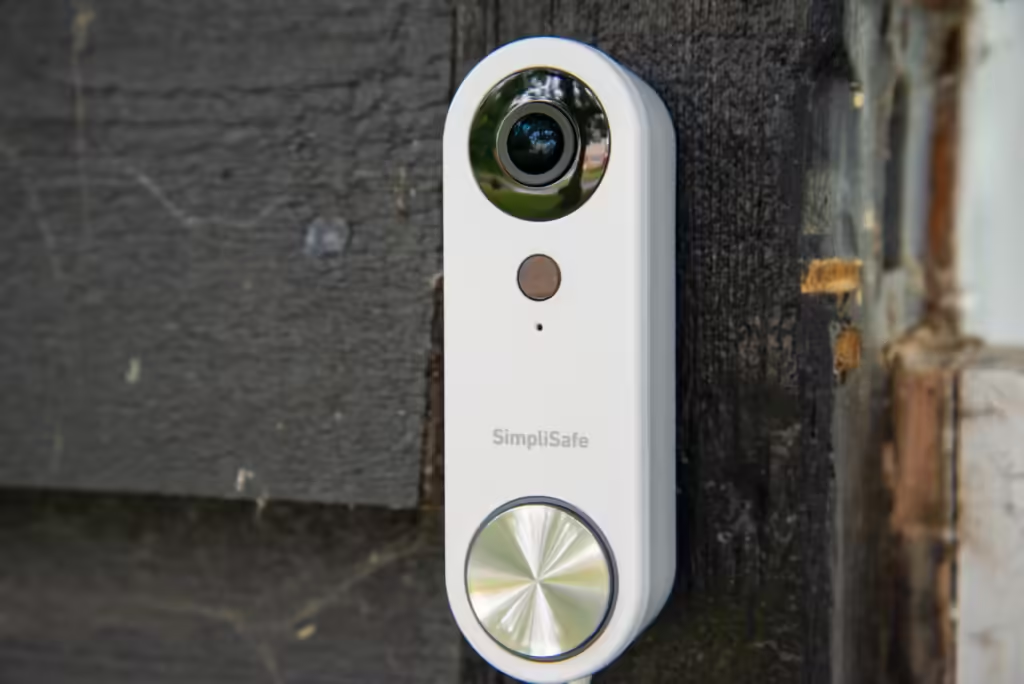Home security isn’t just about locks and alarms anymore—it’s getting smarter, faster, and more intuitive by the year. As technology evolves, homeowners are leaning into innovations that offer more than just peace of mind. From AI-powered cameras to smart doorbells that recognize faces, the latest features are designed to prevent break-ins before they happen. If you’re upgrading your home in the near future, these high-tech security tools will likely be at the top of your wish list.
1. AI-Powered Surveillance Cameras

AI-powered surveillance cameras use advanced algorithms to identify unusual activities and differentiate between humans, animals, and vehicles. These cameras offer real-time alerts, facial recognition, and behavior analysis, enhancing security while reducing false alarms. Some models integrate seamlessly with smart home systems, allowing homeowners to monitor their property remotely.
According to TechCrunch, the market for AI-driven surveillance is rapidly expanding, as these systems provide a proactive approach to home security. Features like motion tracking and predictive analytics help identify potential threats before they escalate. Homeowners appreciate the added layer of protection and the ability to customize alerts based on specific needs. AI-powered cameras represent a significant leap forward in creating secure, intelligent living spaces.
2. Biometric Access Control

Biometric access control systems replace traditional locks with fingerprint, facial recognition, or retinal scanning technology. These systems ensure only authorized individuals can enter, offering a highly secure and convenient alternative to keys or keypads. Many biometric locks are now compatible with smartphone apps, allowing remote access and real-time entry monitoring.
As noted by Security Today, biometric systems are becoming more accessible and affordable for homeowners. They eliminate the risk of lost or stolen keys and provide unparalleled control over who enters your property. With increasing concerns about home security, biometric access solutions are quickly becoming a must-have feature in modern homes. This technology also aligns with the broader trend of integrating high-tech solutions into everyday life.
3. Smart Doorbells with Advanced Features

Smart doorbells equipped with high-definition cameras, two-way audio, and motion sensors allow homeowners to see, hear, and communicate with visitors in real-time. Some models now include package detection, license plate recognition, and even AI-driven threat analysis. These features enhance both convenience and safety, making them a popular choice for modern households.
According to CNET, smart doorbells are evolving beyond simple video intercoms to become central components of home security systems. Integration with other smart devices allows for seamless automation, such as unlocking doors for trusted guests or turning on porch lights when motion is detected. The rise of e-commerce and frequent package deliveries has further increased demand for these innovative devices, ensuring their relevance in the years to come.
4. Wireless Security Sensors

Wireless security sensors detect motion, broken windows, or open doors and send instant alerts to homeowners via their smartphones. These sensors are easy to install and can be placed throughout a property to create a comprehensive security network. Advanced models now use encrypted communication channels, ensuring that data remains secure.
As detailed by Digital Trends, wireless sensors are ideal for modern homes due to their flexibility and scalability. They integrate with broader smart home ecosystems, allowing homeowners to automate responses like activating cameras or triggering alarms. These sensors are especially useful in rental properties or homes undergoing renovation, where hardwiring may not be feasible. Their simplicity and effectiveness make them an essential component of any high-tech security system.
5. Drone-Assisted Home Monitoring

Drone-assisted home monitoring offers a cutting-edge approach to securing large properties. Equipped with cameras and sensors, these drones patrol perimeters, capture real-time footage, and send alerts in case of unusual activity. They can be programmed for routine surveillance or deployed on demand via smartphone apps.
According to Forbes, security drones are gaining popularity among homeowners with expansive properties or those in remote locations. They provide a bird’s-eye view of potential vulnerabilities and can reach areas that traditional cameras might miss. As technology advances, drones are becoming more user-friendly and affordable, making them a viable option for residential security. This innovative solution is redefining what’s possible in home protection.
6. Smart Window and Door Glass

Smart glass technology offers windows and doors that can detect breakage, adjust opacity, or even emit an alarm if tampered with. These systems provide both privacy and security, making them a versatile addition to any home. Some models also integrate with climate control systems, further enhancing energy efficiency.
Smart glass solutions are becoming a cornerstone of modern architecture. They offer an elegant way to combine aesthetics with functionality, appealing to design-conscious homeowners. The added layer of security, particularly in urban settings, ensures these products will remain in high demand. By incorporating smart glass, homeowners can achieve a seamless blend of safety, privacy, and style.
7. Real-Time Cybersecurity for Smart Homes

Real-time cybersecurity solutions protect smart home systems from hacking and unauthorized access. These systems monitor network activity, block suspicious devices, and provide alerts for potential vulnerabilities. With smart homes relying heavily on internet connectivity, robust cybersecurity measures are critical.
The rise in smart home adoption has led to increased concerns about data security. Real-time cybersecurity tools offer peace of mind by ensuring that personal information and home automation systems remain secure. Many solutions now include user-friendly apps, making it easy for homeowners to monitor and manage their networks. This layer of digital security is becoming as essential as physical locks and alarms in the modern home.
8. Voice-Controlled Panic Systems

Voice-controlled panic systems allow homeowners to activate alarms, contact emergency services, or lock down their homes using voice commands. These systems integrate with smart speakers and other home automation devices, offering a hands-free approach to security. They are particularly valuable in emergencies when time and accessibility are critical.
Voice-controlled systems are increasingly being adopted for their convenience and efficiency. They empower individuals to take immediate action without needing to locate a device or control panel. As voice recognition technology improves, these systems are becoming more intuitive and reliable, enhancing their appeal. This innovation exemplifies the growing trend of using AI to streamline and improve home security measures.
9. Predictive Security Analytics

Predictive security analytics use AI and machine learning to identify potential security threats before they occur. By analyzing patterns in sensor data and surveillance footage, these systems can provide proactive alerts to homeowners. They also suggest measures to fortify vulnerable areas of the property.
Predictive analytics are revolutionizing the way security systems operate. They shift the focus from reactive responses to proactive prevention, reducing the likelihood of incidents. This technology is particularly beneficial for high-risk areas or properties with complex layouts. By integrating predictive analytics into their security systems, homeowners can stay one step ahead of potential threats.
10. Geo-Fenced Smart Alarms

Geo-fenced smart alarms activate based on a homeowner’s location relative to their property. These systems use GPS technology to arm or disarm automatically as residents leave or return. They also provide location-based alerts, such as notifications about unlocked doors or open windows.
Geo-fencing adds a new level of convenience and security for tech-savvy homeowners. This feature ensures that security measures are always in place without requiring manual intervention. It’s particularly useful for busy households, where routines vary frequently. As smart home ecosystems evolve, geo-fenced alarms are expected to become a standard feature in high-tech security setups.
11. Wearable Personal Security Devices

Wearable personal security devices connect to home security systems, allowing users to send distress signals or receive alerts directly from their smartwatches or fitness trackers. These devices ensure that homeowners can access security features even when they are away from control panels or smartphones.
Wearable security devices are bridging the gap between personal safety and home security. They offer discreet ways to contact emergency services or trigger alarms, adding a layer of protection in unpredictable situations. Their integration with broader smart home systems ensures a seamless security experience, both inside and outside the home.
12. Energy-Efficient Security Lighting

Energy-efficient security lighting uses LED technology and solar power to provide reliable illumination for homes. These lights often include motion sensors and timers, ensuring they only activate when needed. Advanced models can be controlled remotely via smartphone apps, offering both convenience and energy savings.
Energy-efficient lighting enhances home security while reducing electricity costs. The combination of sustainability and functionality makes these lights a popular choice for eco-conscious homeowners. With ongoing advancements in LED and solar technology, security lighting is becoming more versatile and effective, solidifying its role in modern home protection.
